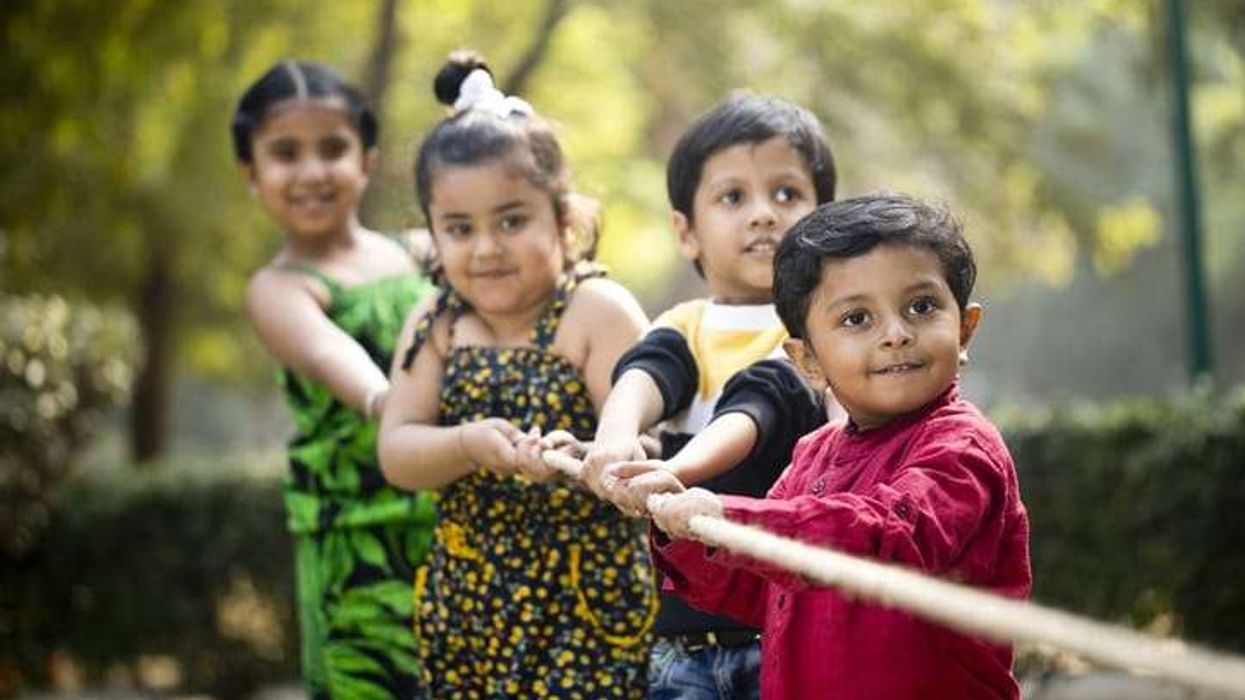A GUIDE TO CHILDREN’S WELLBEING DURING SELF-ISOLATION
by ASJAD NAZIR
PERHAPS, the biggest challenge for parents during the coronavirus lockdown is keeping their children happy, healthy and engaged on a daily basis.
There are multiple things that can be done and some important considerations that need to be taken into account during these uncertain times triggered by the global Covid-19 pandemic.
With that in mind, Eastern Eye spoke to some experts to get helpful hints for parents at home with young children.
Have a routine
Keeping a set routine will not only help maintain discipline and a sense of normality, but also will make children more productive. Important parts of the routine will involve going to sleep early and waking up on time. Make a plan for the week, allocating time for all the things that need to be done, including learning, exercise, fun, family time and meals. Make sure you are not too strict and have some flexibility. Throw in some surprises Having a rigid routine filled with the same things will make youngsters switch off and that is why it’s important to throw in regular surprises, which can range from fun activities to interesting new ways to teach them something. This will keep the child engaged and maintain a sense of wonder.
Learning
Just because school has stopped it doesn’t mean the learning should stop. Schools have prepared packs for children to use at home, and many education led sites provide plenty of information on how to help studies to continue. There is access to online tuition in various forms, websites for parents needing extra ideas, downloadable worksheets,
voice led apps and educational shows on TV. Parents can also go beyond academic learning by teaching children life skills like cooking and even proper hand washing.
Limit screen time
Although computer tablets and TV screens may keep kids quiet, it is important to limit their screen time while they are home for long hours. Make time for other activities that can keep them equally engaged, but also mentally stimulated like reading, art, creating something or being given a manageable responsibility.
Get outside
Being in quarantine doesn’t mean being locked up inside the house for 24 hours. It’s important your child gets some fresh air and some outdoor physical activity. If you don’t have a garden, there are clear government guidelines for outdoor visits to the park, making sure they stay well away from others. There are also virtual tours to places like museums and zoos that can be enjoyed without leaving the house.
Exercise
Most people don’t cope well with solitary confinement, especially children, and it is very easy for them to remain stationary while indoors. This makes the need for physical activity important. Exercise not only improves physical health, but also will help the mental health of youngsters. There are a multitude of options to keep kids active indoors, which includes dancing, physically led fun games, helping with household chores, easy-to-do exercises and following a routine from an online body coach specialising in the young. The activities can be spread throughout the day.
Socialise
Children will miss connecting with friends at school and that is why it’s important for them to remain connected. There are plenty of video chat apps for calling like Skype, Zoom and Whatsapp, but this can be expanded to online activities like fun quizzes, singing together, inter-active games and video-call led parties.
Eat healthy
Being at home means children will have unlimited access to food, including unhealthy snacks. A balanced diet will help the mental and physical health of a child. This should include limiting sugar-based snacks and eating on time.
Remember yourself
Last, but not least, remember yourself. An army is only as good as the general leading them and in this scenario that’s you. So, it’s important parents make time for themselves and look after their mental-physical wellbeing. If you are happy, fit and well, then your child will be too.
Fun activities
THE best way to keep kids entertained and engaged is with fun activities. Here are some activities for kids indoors.
• Arts/Crafts
• Plant seeds
• Make greetings cards
• Read them stories, including
getting relatives to do the same
via video call
• Puzzles
• Write a letter to relatives or a
community hero like a doctor
• Dance
• Get them to write a story
• Build an indoor fort
• Cook/bake
• Treasure hunt
• Quizzes
• Board games like scrabble
• Make puppets
• Learn origami
• Create a new game
• Imagination led games
• Listen to a fun podcast
• Help with DIY
• Go camping in the garden
• Put on a family play
• Learn a new skill
• Start a YouTube channel
• Create an obstacle course
• Make a jigsaw puzzle
• Play dress-up
• Hide and seek
• Practise an existing skill
• Make a home movie using a
smartphone
• Start a blog











